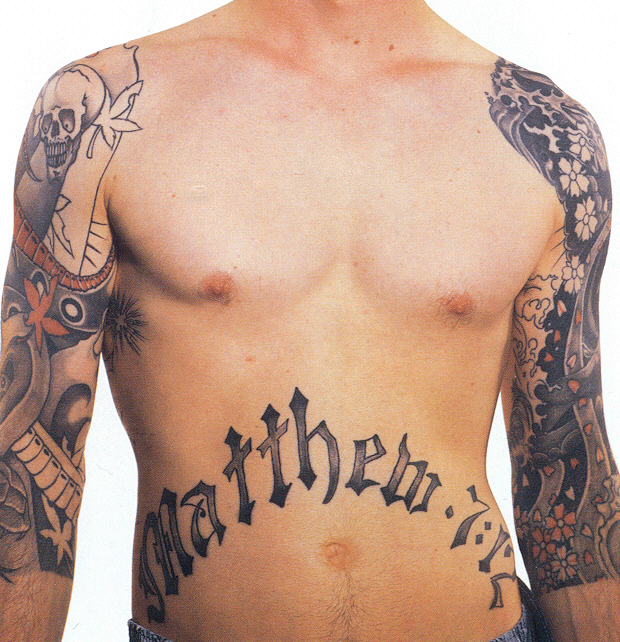the tattoo
“Tattoos evoke a range of reactions – from interest, astonishment, admiration and reverence to consternation and abhorrence. They are met with open mouths or frowns, their bearers are judged or misjudged, awakening fear or desire.” (Schiffmacher 1996:5)
Some general observations on tattoos:
| Tattoos are created by placing coloured inks or pigments under the top layer of skin. | Tattoos are most often, but not always, created by tattoo artists. |
| Tattoos are but one form of intentional body modification. | Tattoos are applied to most any area of the human body. |
| Tattoos can have an infinite number of shapes, from simple line drawings to incredibly intricate designs. |
Tattoos are often symbolic. |
| Tattoos are as ubiquitous as humans themselves; they exist in virtually every culture on all continents. | The act of tattooing causes the recipient a great deal of pain. |
| Tattoos have existed almost as long as humans have. | Tattoos bleed and scab and must be properly cared for while they heal. |
| Tattoos can be most any colour. | Tattoo instruments can include metal needles, sharpened ivory or bone, stone, sticks, chisels, hammers, electric tattoo machines, ball point pens and razors. |
As a starting point for my object study I have chosen twelve tattoos. Before analysis can begin, however, a methodology appropriate for the study of the tattoo must be discussed.
-image: artist unknown (Schiffmacher 1996:577)-
